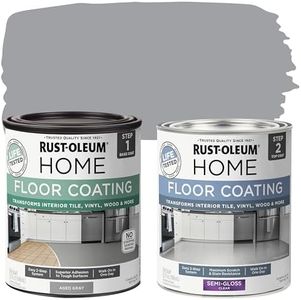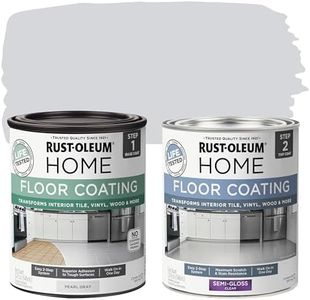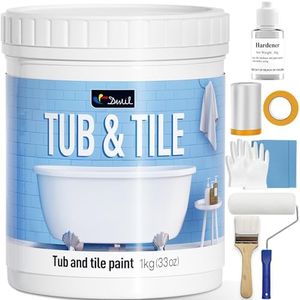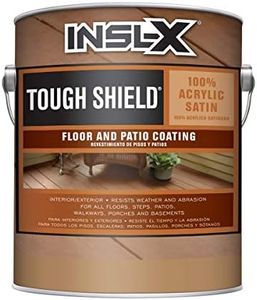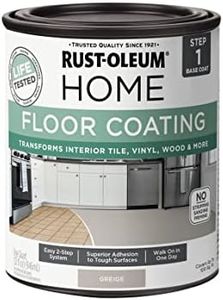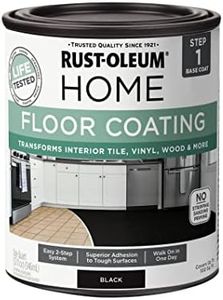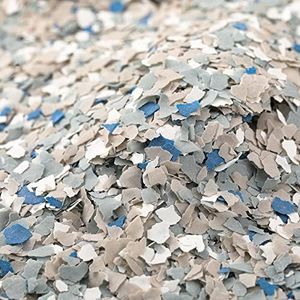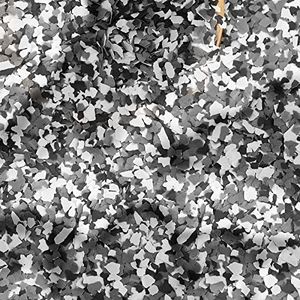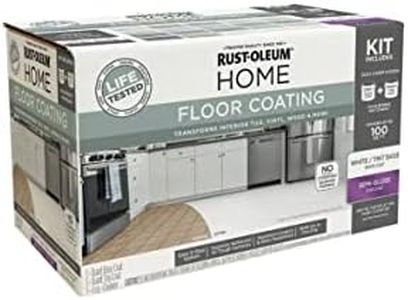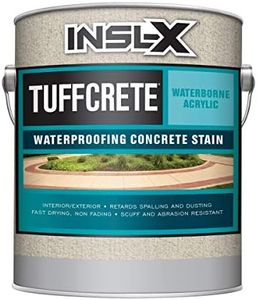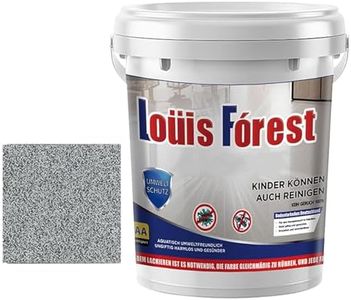We Use CookiesWe use cookies to enhance the security, performance,
functionality and for analytical and promotional activities. By continuing to browse this site you
are agreeing to our privacy policy
10 Best Floor Paint
From leading brands and best sellers available on the web.By clicking on a link to a third party's website, log data is shared with that third party.
Buying Guide for the Best Floor Paint
Choosing the right floor paint can make a big difference in how your floors look, how long they last, and how easy they are to maintain. It's important to think about where you'll be using the paint, what kind of traffic or use the floor will get, and what kind of finish or color you want. Understanding the key specifications will help you narrow down your choices and make sure you get a floor paint that performs well in your specific situation.Paint Base (Water-based vs. Oil-based)The paint base refers to whether the paint is water-based (latex) or oil-based (alkyd/solvent). Oil-based paints are typically more durable and resistant to wear, making them a common choice for garages and workshop floors, but they take longer to dry and have strong odors. Water-based paints dry quickly, emit less odor, are easier to clean, and are suitable for most indoor floors with light to moderate traffic. Your choice here should depend on the type of floor and the amount of use it will get: high-traffic or utility spaces may benefit from oil-based paints, while living areas usually do well with water-based paints.
Durability and Abrasion ResistanceThis specification tells you how well the paint will stand up to foot traffic, moving furniture, or other wear and tear. Some paints are formulated for heavy-duty use, which is ideal for garages, workshops, or commercial spaces, while others are fine for light use in bedrooms or living rooms. Think about who will be using the floor and what kind of activity it will see: choose high durability for busy areas and lighter durability for low-traffic spaces.
Surface CompatibilityNot every floor paint can be used on every type of floor. Some paints are made specifically for concrete, while others work on wood, tile, or even metal. Using the wrong type can lead to chipping or peeling. Always check which surfaces a paint is designed for, and match it to the material of your floor to ensure good adhesion and longevity.
Finish (Gloss, Semi-gloss, Satin, Matte)The finish of floor paint affects both how your floor looks and how easy it is to clean. Gloss and semi-gloss finishes are shiny and reflect more light, making spaces look brighter and helping with cleaning, but they show dust and imperfections more easily. Satin and matte finishes are more subtle and less reflective, hiding imperfections but sometimes being trickier to clean. Your choice should match both your style preference and how much maintenance you're comfortable with.
Slip ResistanceSlip resistance is especially important in areas that might get wet, like bathrooms, kitchens, or entryways. Some floor paints contain grit or create a textured surface to help prevent slips. If you're painting a floor where spills or moisture are likely, or if you have children or elderly people in the home, look for a paint that offers good slip resistance.
Drying and Curing TimeDrying time is how long it takes for the paint to feel dry to the touch, while curing time is how long it takes to reach full strength. Fast-drying paints let you use your space sooner, but long curing times mean you need to avoid heavy use for several days. Consider how quickly you need the room to be usable again and whether you can avoid walking on the floor for a while when choosing a product.
Coverage Per Liter (Spread Rate)Coverage per liter tells you how much area a can of paint will cover, usually listed in square meters or feet. This helps you estimate how much paint you'll need for your project. If your floors have lots of pores or rough patches, you'll use more paint, so choose accordingly and always buy a little extra to account for the surface texture.

